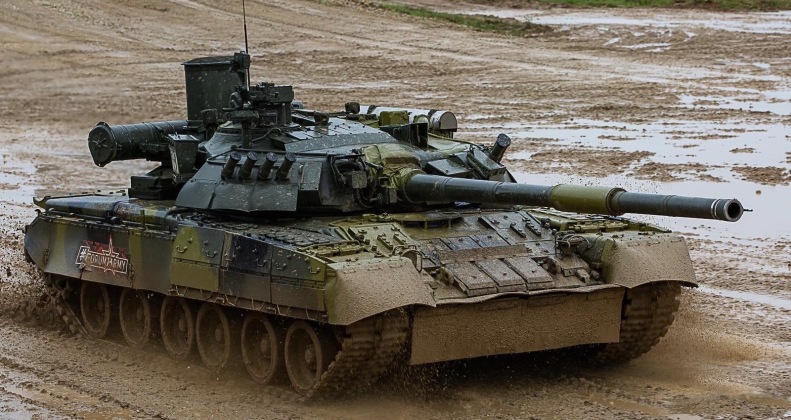News
‘T-100’ Incoming: Russia Confirmed to Be Preparing a New Tank Class For Production

In September 2023 Russian state media reported that the Omsktransmash tank factory was to restart production of the T-80 main battle tank, with reports indicating that the class’ combat capabilities had made a strong impression on both personnel operating them and on the Defence Ministry more broadly. The T-80 was by far the most costly and most capable tank class in the Soviet Army, and despite being over to three times as expensive as the T-72 it was procured in very large numbers to form the backbone of the fleet from the early 1980s. The class’ much higher production and operational costs compared to the T-72, however, led the Russian Defence Ministry to favour the T-72 after the USSR’s disintegration, as the T-72 was seen to be more cost effective and to have better export prospects. This decision, taken at a time of economic crisis in the 1990s, faced considerable resistance from much of the army leadership due to the significantly superior capabilities which the T-80 retained. As a result the tank class ceased production around 1996, while the latest version of the T-72, the much enhanced T-72BU, was re-designated the T-90.
In the 1980s five major facilities produced main battle tanks for the Soviet Army, with Omsktransmash having been one of the three largest alongside the Uralvagonzavod factory located in the Ural Mountains, and the Malyshev Factory located in present day Ukraine. The Omsktransmash factory produced T-54/55 tanks for most of the Cold War into the late 1970s, by then exclusively for export, before converting to produce the T-80. By the end of the Cold War there were thus two facilities producing T-80s and three producing T-72s, with the latter also built under license in Poland, Czechoslovakia and Yugoslavia. Omsktransmash had an ambitious program underway from the late 1980s to develop the T-80 into a next generation tank, which was conceptually similar to the T-14 currently in low level production at Uralvagonzavod with crew housed in an armoured capsule and the turret unmanned. With the post-Soviet Russian economy quickly contracting, the tank was marketed to foreign clients for funding under the name Black Eagle. With Russian having embargoed many of its leading potential clients, however, including Iraq, Iran, Libya and North Korea, funding never materialised.

Much like the next generation of the T-72 was named T-90, so too is it highly likely, and in keeping with prevailing trends in Russia’s naming of its main battle tanks for a new T-80 variant to be re-named. The designation ’T-100’ or ‘can be speculated and would make sense chronologically, and given the apparent preference for names which carry dramatic weight. Unlike the T-90, which directly succeeded the T-72 in production, and for a brief period was even produced alongside it, there will be an approximately 30 year gap between production of the last Soviet designed T-80s and the new production model. This means that the difference in capabilities is expected to be much greater than that between the last T-72B models and the baseline early T-90. It remains uncertain to what extent the T-80’s design will be modernised, however, an in particular if and to what extent elements from the ‘Black Eagle’ design will be incorporated.
The most extreme case for the new T-80 program could see an effort funded to develop a next generation tank based on the design, which could be more promising than the entirely clean sheet T-14 design produced by Uralvagonzavod. Extreme delays to the T-14’s development mean a competing tank could provide a valuable hedge against the T-14 program, while placing increased pressure on Uralvagonzavod to see it through. Nevertheless, with Uralvagonzavod now owning Omsktransmash, and thus having a total monopoly on Russian tank production, options to increase efficiency through competition remain limited. It is highly likely that the new T-80, likely with a new designation, will produce Russia’s most capable tank other than possibly the T-14 itself.












